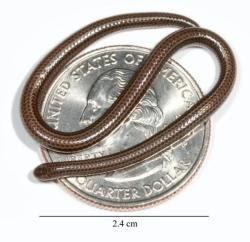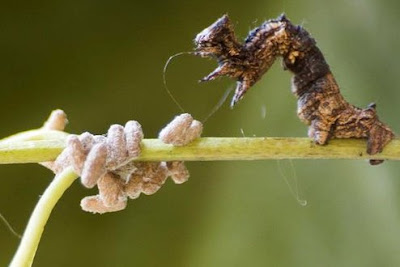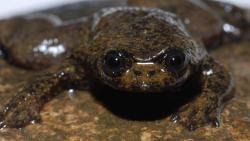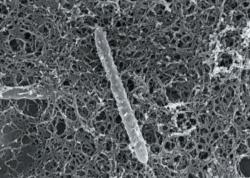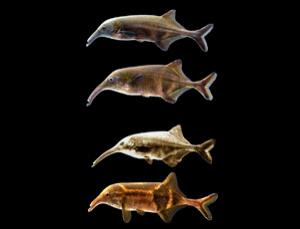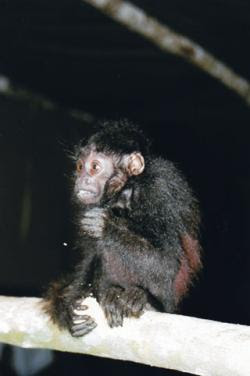
Gorilla
Snowflake was an albino Western Lowland Gorilla, and the most popular resident of the Barcelona Zoo in Spain, where he spent most of his life. He was known worldwide, mentioned in tourist guides and put on postcards, becoming the unofficial mascot for the city.

Albino Squirrel
Known as the “White Squirrel Capital of the World,” Olney, Illinois, is home of the world’s largest known albino squirrel colony. Kenton, Tennessee is home to about 200 albino squirrels. There are also albino squirrels on the main campus of Ohio State University in Columbus, Ohio. Brevard, North Carolina and Marionville, Missouri have a substantial population of white (not albino) squirrels.

Kangaroo
The kangaroo is a national symbol of Australia — its emblem is used on the Australian coat of arms, on some of its currency, and by some of Australia’s best known organizations, including Qantas.

Albino Deer
Deer generally have lithe, compact bodies and long, powerful legs suited for rugged woodland terrain, making them excellent jumpers and swimmers. They are ruminants, or cud-chewers — the teeth are adapted to feeding on vegetation, and like other ruminants, they lack upper incisors, instead having a tough pad at the front of their upper jaw.

The elk, or wapiti, is one of the largest species of deer in the world and one of the largest mammals in North America and eastern Asia. In the deer family, only the moose is larger, and the “Sambar” deer can rival the elk in size.

Albino Moose
The North America moose is the largest extant species in the deer family. Moose are distinguished by the palmate antlers of the males — other members of the family have antlers with a “twig-like” configuration.

Albino (White) Billy Goat
Most goats naturally have 2 horns of various shapes and sizes depending on the breed. While horns are a predominantly male feature, some breeds of goats have horned females, and polled (hornless goats) are not uncommon. Their horns are made of living bone surrounded by keratin and other proteins which are used for defense, dominance, and territoriality.

Albino (White) Llama
The llama is a South American camelid, widely used as a pack animal by the Incas and other natives of the Andes mountains. llamas are still used as beasts of burden today In South America, as well as for the production of fiber and meat.

Albino Alpaca
Along with Camels and Llamas, the Alpaca are classified as Camelids, and have been domesticated for thousands of years. The closest living species are the wild Vicuna, also native to South America. Alpacas are smaller than the other Camelid species, but they are however larger than the wild Vicuna. The Moche people of Northern Peru often used Alpaca images in their art.

Albino Camel
Camels are even-toed ungulates within the genus Camelus, native to the dry desert areas of western Asia, and central and east Asia, respectively. The dromedary, one-humped or Arabian camel has a single hump, and the Bactrian camel has 2 humps.

Albino (White) Moth
A moth is an insect closely related to the butterfly, both being of the order Lepidoptera. Moths frequently circle artificial lights. One hypothesis for this behavior is that moths use a technique of celestial navigation called transverse orientation. By maintaining a constant angular relationship to a bright celestial light, such as the Moon, they can fly in a straight line. When a moth encounters a much closer artificial light and uses it for navigation, the angle changes noticeably after only a short distance.

Albino Hedgehog
A hedgehog is any of the small spiny mammals of the subfamily Erinaceinae and the order Erinaceomorpha. There are 16 species of hedgehog found through parts of Europe, Asia, Africa, and New Zealand. There are no hedgehogs native to Australia, and no living species native to North America — those in New Zealand are introduced. Hedgehogs have changed little over the last 15 million years. Like many of the first mammals they have adapted to a nocturnal, insectivorous way of life.

Albino Cat
The “C” gene codes for the enzyme tyrosinase, the first step in pigment production. Its recessive alleles determine whether a cat is a complete albino (pink-eyed) or a temperature sensitive albino. The temperature sensitive albino genotypes are cbcb Burmese, cscs Siamese, and cbcs Tonkinese. The cscs gene can turn a cat’s eyes blue due to a reduced number of melanocytes, affecting pigmentation of the eyes. If a cat has the dominant C allele, then the cat is non-albino and full pigment production occurs.

White Bengal Tiger
White tigers have a genetic condition that nearly eliminates pigment in the normally orange fur, although they still have dark stripes. Another genetic condition in snow-white or ‘pure white’ tigers also makes the stripes of the tiger very pale. When a tiger inherits 2 copies of the recessive gene for the paler coloration, they may have a pink nose, pink paw pads, grey-mottled skin, ice-blue eyes, and white to cream-colored fur with black, grey, or chocolate-colored stripes.

White Lion
The white lion is not a separate subspecies nor is it albino, but a rare color mutation of the Kruger subspecies of lion that has been perpetuated by selective breeding in zoos around the world. They’re occasionally found in wildlife reserves in South Africa, and white cubs have sporadically turned up among tawny lions in the Timbavati and Kruger National Park regions.

Rare White Lion Cubs Greet the World
Two rare white lion cubs are feted at the Belgrade Zoo in Serbia, December 2008.
Albino Bison
Bison is a taxonomic group containing 6 species of large even-toed ungulates within the subfamily Bovinae. Only 2 of these species still exist — the American bison and the European bison, or wisent, each with 2 subspecies. The American and European bison are the largest terrestrial mammals in North America and Europe.

Albino Ferret
The ferret is a domestic mammal. They typically have brown, black, white, or mixed fur, an average length of approximately 20 inches (51 centimeters) including a 5 inch (13 centimeter) tail, and weigh between 1.5 to 4 pounds (0.8 to 2 kilos). Ferrets are sexually dimorphic predators with males being substantially larger than females.

Albino Dingo
The Dingo, or Warrigal, is a feral domestic dog rather than a separate species, which mostly lives independently from humans. They have features in common with both wolves and modern dogs, and are regarded as more or less unchanged descendants of an early ancestor of modern dogs.

Albino Koala
The Koala is a thickset arboreal marsupial herbivore native to Australia, and the only extant representative of the family Phascolarctidae, found in coastal regions of eastern and southern Australia, from near Adelaide to the southern part of Cape York Peninsula, but are not found in Tasmania or Western Australia.

Albino Seal
The true seals or earless seals are one of the 3 main groups of mammals within the seal suborder, Pinnipedia, and sometimes called crawling seals to distinguish them from the fur seals and sea lions of family Otariidae. Fur seals are much more closely related to sea lions than true seals, and share with them external ears, relatively long and muscular foreflippers, and the ability to walk on all fours. They’re marked by their dense underfur, which made them a long-time creature of commercial hunting.

Albino Whale
Whales are marine mammals which include the blue whale — the largest animal alive today. Orcas, colloquially referred to as killer whales, and pilot whales have whale in their name but for the purpose of classification they’re actually dolphins.

Albino Fish
The leucistic Long Finned Oscar is native to Peru, Colombia, Brazil and French Guiana and occurs in the Amazon river basin, along the Amazonas, Iça, Negro, Solimoes and Ucayali river systems, and also in the Approuague and Oyapock drainages. In its natural environment the species typically occurs in slow moving white-water habitats, and has been observed sheltering under submerged branches. Feral populations also occur in China, northern Australia, and Florida, US, as a by-product of the ornamental fish trade.

Albino Turtle
Turtles are reptiles of the order Testudines, their body mostly shielded by a special bony or cartilaginous shell developed from their ribs. The earliest known turtles date from 215 million years ago, making turtles one of the oldest reptile groups and a more ancient group than lizards and snakes. About 300 species are alive today, but some are highly endangered.

Albino Frog
Frogs are amphibians in the order Anura, characterized by long hind legs, a short body, webbed digits (fingers or toes), protruding eyes, and the absence of a tail, most noticeable by their call, which can be widely heard during the night or day, mainly in their mating season. Most frogs have a semi-aquatic lifestyle, but move easily on land by jumping or climbing.

Snakes
Snakes are found on every continent except Antarctica and range in size from the tiny, 4-inch (10 centimeter) long thread snake to pythons and anacondas of up to 25 feet (7.6 meters) in length. In order to accommodate snakes’ narrow bodies, paired organs (such as kidneys) appear one in front of the other instead of side by side.

Albino Alligator
The alligator has been described as a ‘living fossil’ from the age of reptiles, having survived on earth for 200 million years. An average American alligator’s weight and length is 800 pounds (360 kilos) and 13 feet (4.0 meters) long, but can grow to 14.5 feet (4.4 meters) long and weigh 1,000 pounds (450 kilos).

Albinism in Birds
Albinism in birds is rare, occurring to any extent in perhaps 1 in 1800 individuals, though near Prypiat, Ukraine most sparrows have slight albinism. Albino birds have white feathers in place of colored ones on some portion of its body. A bird that’s naturally white, such as a swan, goose, or egret, is not an albino, nor is a bird that has seasonally alternating white plumage.

Albino Mockingbird
Mockingbirds are a group of New World passerine birds from the Mimidae family, best known for the habit of some species mimicking the songs of insect and amphibian sounds as well as other bird songs, often loudly and in rapid succession.

Snowy Egret
The Snowy Egret is a small white heron, and the American counterpart to the very similar Old World Little Egret, which has established a foothold in the Bahamas. Adults are typically 24 inches (60 centimeters) long. They have a slim black bill and long black legs with yellow feet. The area of the upper bill in front of the eyes is yellow, but turns red during the breeding season when the adults also gain re-curved plumes on the back, making for a ’shaggy’ effect.

White Heron
The herons are wading birds in the Ardeidae family. Some are called egrets or bitterns instead of herons. However, egrets are not a biologically distinct group from the herons, and tend to be named differently because they’re mainly white and / or have decorative plumes, and while having the same build as the larger herons, tend to be smaller. Some members of this group nest colonially in trees, others, notably the bitterns, use reedbeds.

Albino Kookaburra
Kookaburras, or Cookaburras, are large to very large terrestrial kingfishers native to Australia and New Guinea, with a total length of 11 to 17 inches (28 to 42 centimeters). They’re generally not closely associated with water, found in habitats ranging from humid forest to arid savanna, as well as suburban and residential areas near running water and where food can be searched for easily.

Albino Owl
Owls are an order of birds of prey classified in the order Strigiformes, in which there are over 200 extant species, found in all regions of the Earth except Antarctica, most of Greenland, and some remote islands. Owls are mostly solitary and nocturnal, with some exceptions such as the Burrowing Owl. They typically hunt small mammals, insects, and other birds, though a few species specialize in hunting fish.

Albino Ostrich
The ostrich is a large flightless bird native to Africa (and formerly the Middle East), and share the order Struthioniformes with the Emu, kiwis, and other ratites. It’s distinctive in its appearance with a long neck and legs and the ability to run at speeds of about 46 mph (74 km/h) — the top land speed of any bird. The ostrich is the largest living species of bird and lays the largest egg of any bird species.

Albino Penguin
Penguins are a group of aquatic, flightless birds living almost exclusively in the Southern Hemisphere. Highly adapted for life in the water, penguins have countershaded dark and white plumage, and their wings have become flippers. Most penguins feed on krill, fish, squid, and other forms of sealife caught while swimming underwater. They spend about half of their life on land and half in the oceans.



















